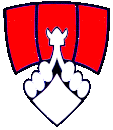James Starley's Sewing Machines
Attempt of a chronology
1859 - 1877
| ca 1850 | James Starley works as an auxiliary gardener at John Penn. This recognizes Starley's technical talent and recommends him to Josiah Turner, partner at Newton, Wilson & Co. in London. | John Penn 1805-1878 John Penn and Sons are a well positioned shipbuilding company. Among other things, they build heavy marine engines for the navy. Josiah Turner Silas Covell Salisbury Rowley Benbow Turner William Hillman William Borthwick Smith |
| ca 1855 | James Starley is employed at Newton, Wilson & Co. in London. The company applies as a pioneer in the British sewing machine industry. Since 1851 the company imports and sells mainly US sewing machines, later own constructions follow. In homework James Starley makes his European - sewing machine. Josiah Turner follows this with great interest. | |
| 1859 | James Starley and Josiah Turner found European Sewing Machine Co. In addition to the manufacture of European, US American sewing machines are imported and sold. | |
| 1861 | In May James Starley leaves Newton, Wilson & Co. Silas Covell Salisbury, an American, joins European Sewing Machine Co. He has a patent for sewing machines. Models European, Godiva, Express and Swiftsure are produced. Public interest in the employment of unemployed watchmakers leads to public participation and numerous private investors. | |
| 1862 | The European Sewing Machine Co is now listed as Ltd. A sales office is opened in London. | |
| 1863 | The company is registered as public company for the manufacture and sale of Salisbury and Starley's knot-bonding and other sewing machines. The company has difficulties in expanding and decides to expand its production through diversification. | |
| ca 1865 | James Starley constructs a four-wheeled Veloziped with sprung wheels. | |
| 1867 | The company's name is changed to Coventry Sewing Machine Co., Ltd. | |
| 1868 | James Starley receives patent #1678 for improvements to sewing machines. Rowley B. Turner, Parisian agent of the company and nephew of Josiah Turner, brings a Micheaux Velociped to England. He has an order for the production of 400 ea in his pocket, which the company carries out. However, the Prussian-French war hinders distribution in France. The entire production can be sold in Great Britain. | |
| 1869 | The company receives another major order for bicycles. (Note: The orderer is not identifiable; the sources do not agree on the scope of the order.) The number of pieces varies between 400 and 700 pieces. The Annual General Meeting decides to rename the company Coventry Machinists Company. Sewing machines and velocipedes are now produced. | |
| 1870 | James Starley receives the patent No. 1430 for improvements on sewing machines and the so called Ariel - Patent for spoke tensioning. In the same year he leaves the company together with William Hillman. They continue to build sewing machines, presumably under Starley's name. | |
| 1871 | The Europe - Sewing machine is patented. As a shareholder William Borthwick Smith joins the company, which now trades as Smith, Starley and Co under the address St Agnes Works, Hale Street, Coventry. | |
| 1872 | William Hillman leaves the company and concentrates on building bicycles. The company is now known as Smith and Starley and receives international awards for its sewing machines in Lyon. | |
| 1873 | Smith and Starley get a patent for improvements on sewing machines. The company moves to Ariel Works, Spen Street, Coventry. They receive more international awards for sewing machines in Vienna. | |
| 1874 | James Starley is increasingly active in the field of bicycle construction. He is granted a patent for tangential spokes. In the sewing machine sector, international awards follow in London. | |
| 1875 | Smith and Starley receive further international awards for sewing machines in Manchester. Haynes & Jeffris build bikes according to Smith and Starley - designs and lever tension wheels. | |
| 1876 | James Starley receives a patent for improvements on roller skates. | |
| 1881 | At the 17th of June James Starley dies. By 1881, more than 20,000 sewing machines were manufactured according to Starley patents. |
© 2021-2026 by ROVER - Passion / Michael-Peter Börsig

 Deutsch
Deutsch